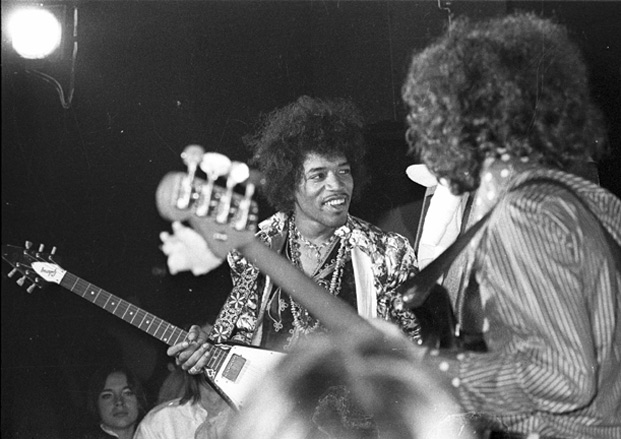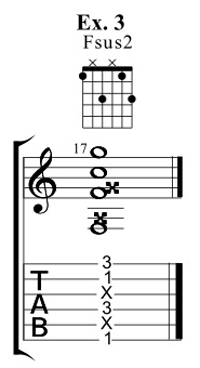How to Play the "Other" Hendrix Chord
While much has been written about the 7#9, "Hendrix" chord, there's another, oft-overlooked chord voicing prominently featured in Hendrix's work.

Of the myriad contributions Jimi Hendrix has made to the lexicon of modern guitar, one of the most enduring is the legendary “Hendrix chord."
The chord, an E7#9, was definitely nothing new when Hendrix famously used it in “Purple Haze” (Jazz and R&B guitarists used it extensively, and the Beatles featured it years earlier on “Taxman”), but its use by Hendrix inspired its use by generations of guitarists in a wide range of styles.
EXAMPLE 1 is the most famous fingering of the “Hendrix chord," though Hendrix and many others would often also use the voicing found in EXAMPLE 2.
Note that the #9 is the enharmonic equivalent of the minor 3rd, so the chord can be seen as just a comfortable fingering that consists of the root, flat 7, and both the major and minor 3rds.
This major/minor ambiguity makes the chord perfectly suited for the blues, while using it as a substitution for the V chord in a key can help lend a jazzy feel to a turnaround (Stevie Ray Vaughan often used it in this manner).
While much has been written about the 7#9 chord and Jimi’s use of it, an oft-overlooked chord voicing featured prominently in Hendrix’s recorded work is his sus2 chord shape depicted in EXAMPLE 3.


The chord should be fingered in the “Jimi-approved” manner of using the thumb to fret the low E string root, with the ring finger fretting the D string, the index fretting the B string, and the pinky grabbing the high E string.
The A string should be muted with the tips of the thumb and ring fingers, and the G string should be muted with the underside of the ring finger and the tip of the index.
Since the chord is a sus and has no 3rd, it can be moved around throughout a given key while maintaining the same fingering. Jimi would often slide the chord around in a line (see “Castles Made of Sand” and “Little Wing”), further emphasizing its open, airy qualities.
EXAMPLE 4 is a Hendrix-inspired line demonstrating the chord’s versatility within a key.

Another cool thing that can be done to take advantage of the chord shape’s idiosyncratic fingering is to ease off the mute on the G string and allow it to ring out as you move the chord around.
EXAMPLE 5 is a group of particularly good sounding positions of this chord that take advantage of the open G. Try it in the unlisted “in-between” spots too!As always, get these down and experiment with finding uses for this concept in your own playing. Happy shredding!

Scott Marano has dedicated his life to the study of the guitar, honing his chops at the Berklee College of Music under the tutelage of Jon Finn and Joe Stump and working as an accomplished guitarist, performer, songwriter and in-demand instructor. In 2007, Scott developed the Guitar Strength program to inspire and provide accelerated education to guitarists of all ages and in all styles through state-of-the-art private guitar lessons in his home state of Rhode Island and globally via Skype. Learn more at GuitarStrength.com.
Get The Pick Newsletter
All the latest guitar news, interviews, lessons, reviews, deals and more, direct to your inbox!
Scott Marano has dedicated his life to the study of the guitar, honing his chops at the Berklee College of Music under the tutelage of Jon Finn and Joe Stump and working as an accomplished guitarist, performer, songwriter and in-demand instructor. In 2007, Scott developed the Guitar Strength program to inspire and provide accelerated education to guitarists of all ages and in all styles through state-of-the-art private guitar lessons in his home state of Rhode Island and globally via Skype.







![Joe Bonamassa [left] wears a deep blue suit and polka-dotted shirt and plays his green refin Strat; the late Irish blues legend Rory Gallagher [right] screams and inflicts some punishment on his heavily worn number one Stratocaster.](https://cdn.mos.cms.futurecdn.net/cw28h7UBcTVfTLs7p7eiLe.jpg)


